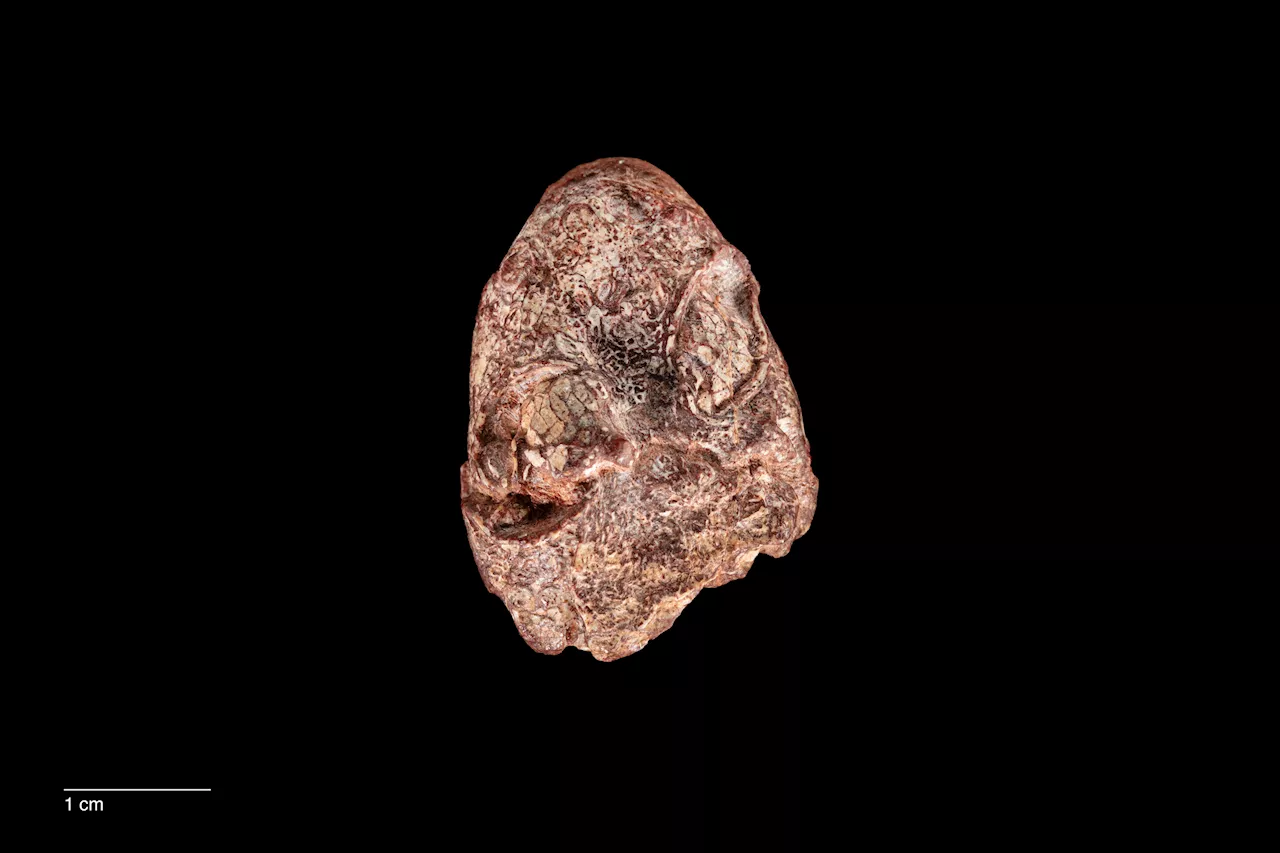All the dinosaurs and animals from 65.
Summary SCREENRANT VIDEO OF THE DAY SCROLL TO CONTINUE WITH CONTENT The 65 movie dinosaurs adds to the excitement and danger of the 2023 sci-fi thriller, though it should be noted that several are more inspired by dinosaurs than based in reality. The movie begins with Captain Mills piloting a transport ship carrying colonists, but the multi-year mission is interrupted by space debris around a remote planet.
14 Woolly Mammoth The Remains Of The Mammoth Show The T-Rex's Threat While a living mammoth isn't seen in 65, its remains add some suspenseful ambiance as Captain Mills explores the swampland. Its skeleton, complete with tusks, can be seen as he wanders through what amounts to a graveyard and a T. Rex dining area. The T. Rex might have lived 65 million years ago in the Late Cretaceous Period, but wooly mammoths didn't appear until millions of years later, in the Pleistocene Period.
12 Deinosuchus A Dinosaur That Is Related To Alligators & Crocodiles Close The Deinosuchus is a prehistoric relative of alligators and crocodiles that makes an appearance during an ocean sequence with Mills and Koa. The hulking aquatic creature lived up to 82 million years ago, during the late Cretaceous period, and could get as large as 40 or 50 feet. This made it similar in size to the T.
10 Velociraptor The Jurassic Park Fan Favorites A;sp Appear In 65 A popular figure in pop culture thanks to the Jurassic Park franchise, velociraptors are featured in 65, albeit with a few distinct differences. The Velociraptors in 65 are more agile and bird-like in their appearance, with what looks like feathers on their scales. They hunt in packs and try to work together to hunt Mills and Koa, but the pair avoid them by hiding in a series of caves.
The appearance of this unknown parasite offers up a deadly prehistoric organism that is very unlike the dinosaurs that rampage through the landscape. The Dsungaripterus is a medium-sized pterosaur with a large skull with a crest running along the top of its head. While it didn't appear in the Jurassic World movies, it did appear in the games, Jurassic World: The Game and Jurassic World Evolution 2. It also shows up in the movie, Dino King 3D: Journey to Fire Mountain. As for the version in 65, the one complaint is that its eyes were too far forward, yet another chance for the movie to slightly fictionalize the real historical dinosaurs.
Related 65's Budget Explained & How Much It Made At The Box Office Despite the hype, Adam Driver dinosaur thriller didn't meet box office expectations. The underperformance can be attributed to a number of factors. 6 Jakapil 65's Most Adorable Dinosaur Close A Jakapil is an armored dinosaur that was first discovered in the last 10 years and appears in the film as a baby .
4 Oviraptor These Are The Dinosaurs That Attack Mills In The Cave Oviraptors, with their fin-like head crests and nimble bodies, make their big debut in 65 attacking Mills in the cave sequence. They primarily ate crustaceans and mollusks and were probably covered in more feathers than they appear to be in the film.
2 Pseudoscorpion 65's Terrifying Prehistoric Scorpion Creature A Pseudoscorpion attacks Koa during one of their breaks through the terrain, prompting Mills to jump into action to avoid a potentially fatal blow from its stinger. Prehistoric scorpions contained venom just like their modern-day counterparts but could grow up to 28 inches. Scorpions are some of the oldest creatures in 65, having lived 435 million years ago, and can breathe in water and on land.
United States Latest News, United States Headlines
Similar News:You can also read news stories similar to this one that we have collected from other news sources.
 Rapid Growth Rates of Early Dinosaurs and Other AnimalsThe earliest dinosaurs had rapid growth rates, but so did many of the other animals living alongside them, according to a new study. Dinosaurs grew up fast, a feature that likely set them apart from many other animals in their Mesozoic ecosystems.
Rapid Growth Rates of Early Dinosaurs and Other AnimalsThe earliest dinosaurs had rapid growth rates, but so did many of the other animals living alongside them, according to a new study. Dinosaurs grew up fast, a feature that likely set them apart from many other animals in their Mesozoic ecosystems.
Read more »
 Prehistoric Amphibian Ancestor Resembling Kermit the Frog Discovered in Smithsonian CollectionResearchers have discovered a prehistoric amphibian ancestor in the Smithsonian collection that resembles Kermit the Frog. The fossil, named 'Kermitia', is believed to be over 200 million years old and provides insights into the evolution of amphibians.
Prehistoric Amphibian Ancestor Resembling Kermit the Frog Discovered in Smithsonian CollectionResearchers have discovered a prehistoric amphibian ancestor in the Smithsonian collection that resembles Kermit the Frog. The fossil, named 'Kermitia', is believed to be over 200 million years old and provides insights into the evolution of amphibians.
Read more »
 Secrets of 'Extraordinary' Prehistoric Site Likened to Pompeii RevealedThe Bronze Age settlement, dated to around 850 B.C., was destroyed by a catastrophic fire when it was less than a year old.
Secrets of 'Extraordinary' Prehistoric Site Likened to Pompeii RevealedThe Bronze Age settlement, dated to around 850 B.C., was destroyed by a catastrophic fire when it was less than a year old.
Read more »
 The Suprise Discovery Of The World's Largest Prehistoric Dolphin Reveals Unlikely LinkA surprise fossil found in the Amazon rainforest connects to both ancient saltwater dolphins and contemporary freshwater kin.
The Suprise Discovery Of The World's Largest Prehistoric Dolphin Reveals Unlikely LinkA surprise fossil found in the Amazon rainforest connects to both ancient saltwater dolphins and contemporary freshwater kin.
Read more »
 Study reveals 'cozy domesticity' of prehistoric stilt-house dwellers in England's ancient marshlandDetailed reports on thousands of artifacts pulled from 'Britain's Pompeii' reveals the surprisingly sophisticated domestic lives of Bronze Age Fen folk some 3,000 years ago -- from home interiors to recipes, clothing, kitchenware and pets.
Study reveals 'cozy domesticity' of prehistoric stilt-house dwellers in England's ancient marshlandDetailed reports on thousands of artifacts pulled from 'Britain's Pompeii' reveals the surprisingly sophisticated domestic lives of Bronze Age Fen folk some 3,000 years ago -- from home interiors to recipes, clothing, kitchenware and pets.
Read more »
 Researchers name prehistoric amphibian ancestor discovered in Smithsonian collection after Kermit the FrogScientists have uncovered the fossilized skull of a 270-million-year-old ancient amphibian ancestor in the collection of the Smithsonian's National Museum of Natural History. The team of researchers described the fossil as a new species of proto-amphibian, which they named Kermitops gratus in honor of the iconic Muppet, Kermit the Frog.
Researchers name prehistoric amphibian ancestor discovered in Smithsonian collection after Kermit the FrogScientists have uncovered the fossilized skull of a 270-million-year-old ancient amphibian ancestor in the collection of the Smithsonian's National Museum of Natural History. The team of researchers described the fossil as a new species of proto-amphibian, which they named Kermitops gratus in honor of the iconic Muppet, Kermit the Frog.
Read more »
